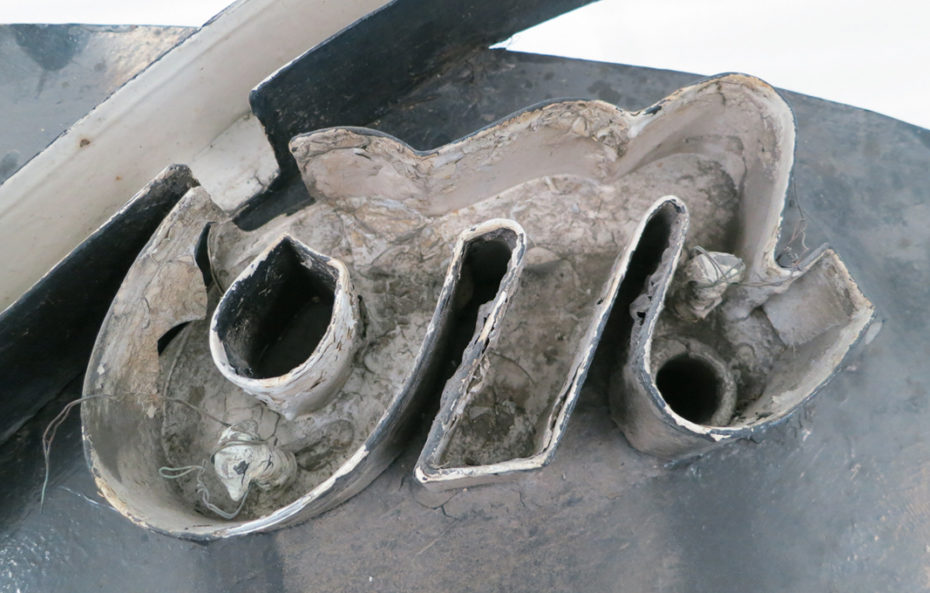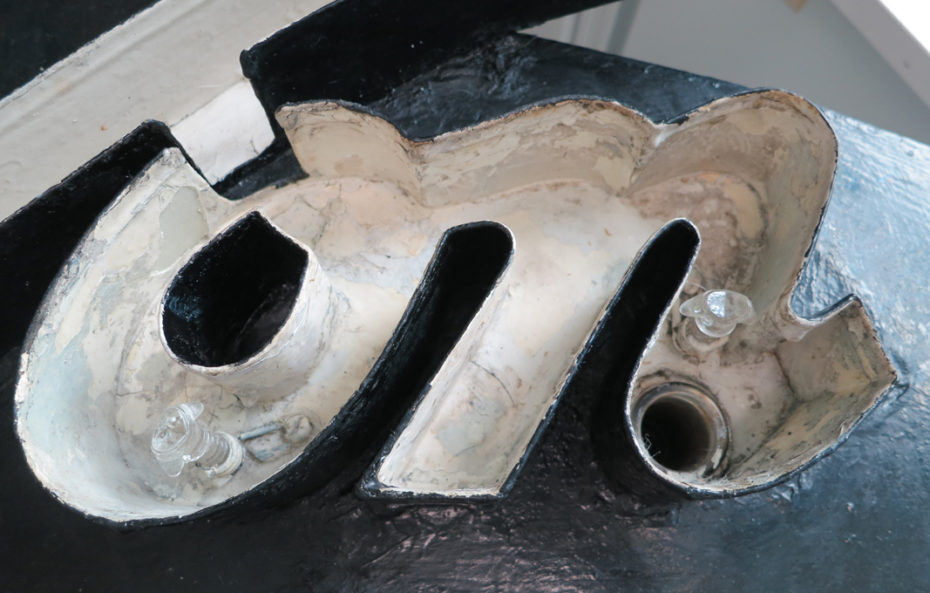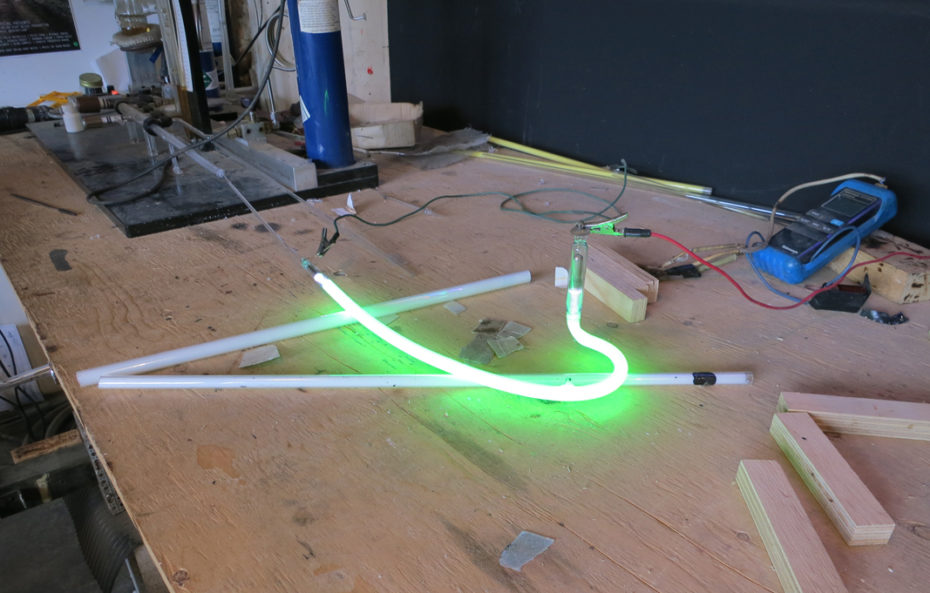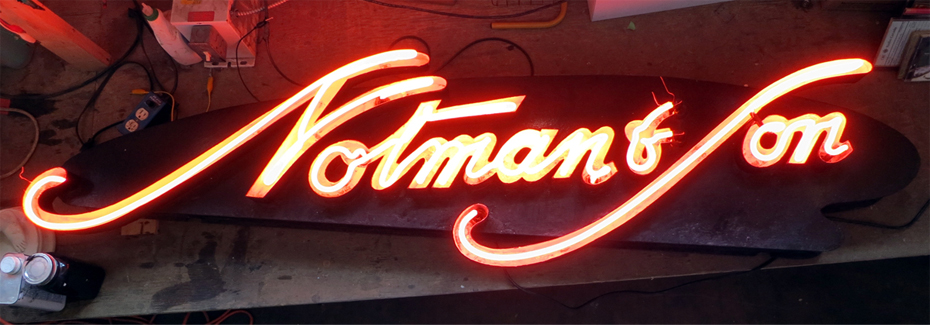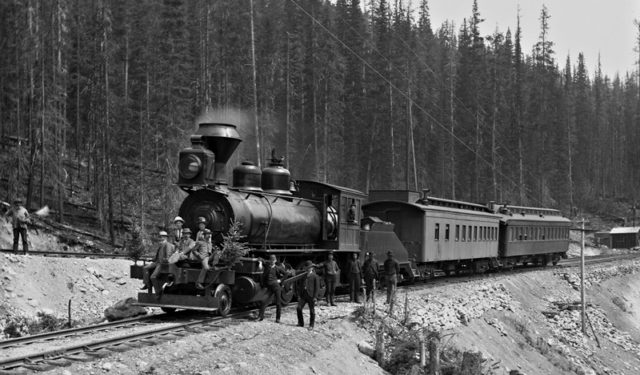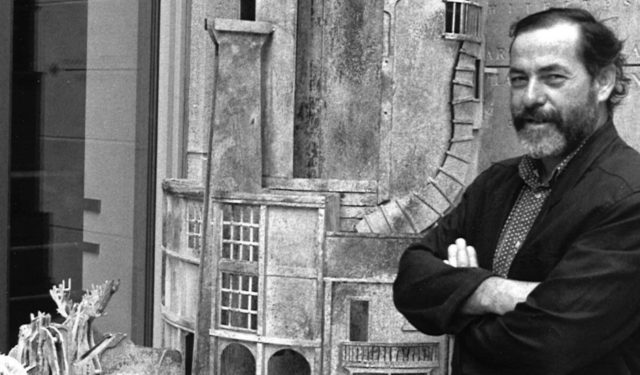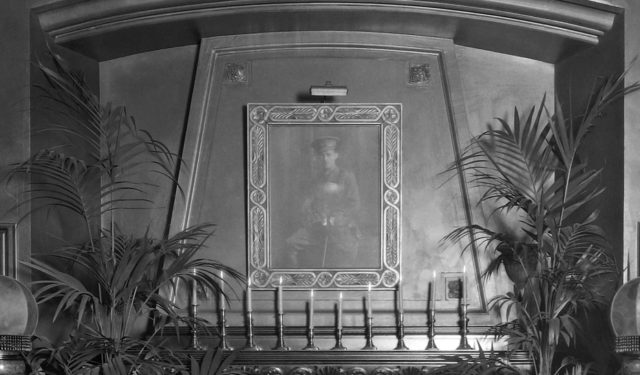Lights On! The Conservation of the Notman & Son Neon Sign
Discover the techniques used to restore the original colour of the Notman & Son neon sign.
November 7, 2016
The Notman & Son neon sign was made in the mid-1950’s and adorned the doorways of at least two locations of the studio, including one at 1176 Sherbrooke Street West, where it was photographed by Edith Mather in 1979. George Dudkoff, the last proprietor of the Notman Studio, took possession of the sign after the studio closed and subsequently donated it to the McCord Museum in 2012.
When examined by conservators at the McCord earlier this year, the sign bore all the marks of wear and tear expected for an object left outdoors for over twenty years, then stored in a basement for at least another thirty. Although the sign still had its original paint layers, it was no longer functional, and an important question regarding its historic appearance remained: what had been the colour of the neon light?
Fortunately, two small pieces of the original tubing remained, and we were informed by Gérald Collard, an expert in neon sign history and manufacture, that tests could be done to determine the colour of the tube when lit. Neon tubes light through the electrical ionization of a gas, which excites a fluorescing coating on the inside of the tube. A wide range of colours can be produced by varying the combinations of gas (neon or argon) and the coating, as well as by the addition of mercury inside the tube. After attaching electrodes to each end of a section of the original tubing, creating a vacuum inside the tube and initiating a current, we were delighted to see the coating glow bright green! Further deduction told us that there was only one possible answer to our question – neon gas along with the coating had produced a deep orange-red light.
The conservation treatment restored the stylish mid-century appearance of the sign – the original paint layers were saved through consolidation, and cleaning and inpainting losses brought the curved shape of the box to the fore. The distinctive script was reproduced in neon, using the existing channels in the sign as well as the historic photograph as guides. The newly conserved sign is exhibited in Notman, Visionary Photographer.



